We’ve been on an inventor kick lately and today’s post is about someone who should be a household name – Glenn Curtiss!
We’ve been to Edison’s lab, George Eastman’s home (Kodak Museum), and were pleasantly surprised to find a Harvest Host camping spot at the Glenn Curtiss Museum while visiting Hammondsport in New York’s Finger Lakes region.
If you read my prior post (link here), you know that I was pretty hard on Edison who is known world-wide as the inventor of the lightbulb, phonograph, and motion pictures.
Just a few posts later (link here), I praised George Eastman, not for inventing the camera, but for bringing an easy-to-use, low-cost model that expanded the market and for perfecting the formula for cellulous, reeled film which not only helped popularize cameras but also enabled motion pictures. Now I’m about to praise Glenn Curtiss as well.
So, why so critical of Edison? Doesn’t he deserve praise as well? Yes, we should be forever grateful to Edison as he (and his often-uncredited team) did a TON of methodical testing on the lightbulb, phonograph, and motion picture to bring practical, working technology to the masses. He rarely gave credit, however, to the pioneers who made the key discoveries that underpinned his developments (the shoulders on which he stood) and he was a patent troll, often filing broad-based patents that tied up all the space around a technology to intentionally block anyone else who was pursuing it. Now that I’ve tied and untied those knotted knickers, let’s get back to the subject at hand – the great Glenn Curtiss, who you may not know, but definitely should!
Curtiss’ Early Life and Connection to Eastman
Due to some unfortunate family circumstances, Curtiss was raised by his mother and grandmother on his grandmother’s farm in Hammondsport. In 8th grade, Curtiss’ mother moved them to Rochester and Curtiss went to work to help support his family. He had an early interest in mechanics and his first job was at Eastman Dry Plate and Film Company (Kodak) where he invented a stencil machine used at the plant and later built a simple camera to study photography.
America’s love affair with the bicycle began in the 1880s. Curtiss bought one and began delivering telegrams for Western Union. He also rode the 6.5-hour trip from Rochester to his grandmother’s vineyard to help her when he could. When a Hammondsport local organized a racing team, Curtiss joined and began winning cycling races. By 1897, he had moved back to Hammondsport, was a racing champion in the area, was married, and had opened his own successful cycling shop. By 1899, at age 21, he’d started experimenting with light weight motorcycle engines and in 1902, he placed 3rd in a race on one that he designed. The orders poured in and this required him to build several factories in town to support his growing business.
Development of the V-4 and V-8 Engine Make Curtiss the Fastest Man on Earth
One person very interested in his lightweight motors was the well-known blimp enthusiast and showman, Captain Thomas Baldwin, who travelled with circuses showcasing his daring flights in his blimp – which at the time was thought to be the leading contender for commercializing manned flight. His interested in improving the speed and capacity of his blimps led him to move his shop from San Francisco to Hammondsport to be near Curtiss who was the first to design a lightweight V-4 engine which was quickly followed by a V-8.
In January 1907, Curtiss travelled to Florida to participate in a motorcycle time trial and although the judges wouldn’t officially let him use his V-8 motorcycle they agreed that he could demo it and get an official time. He traveled 2 miles down the beach to get up to speed before hitting 136.4 mph and then used another mile to slow down. This shattered the world speed record, and he became known as “The Fastest Man on Earth” – a title he held until 1911 when an automobile beat him.
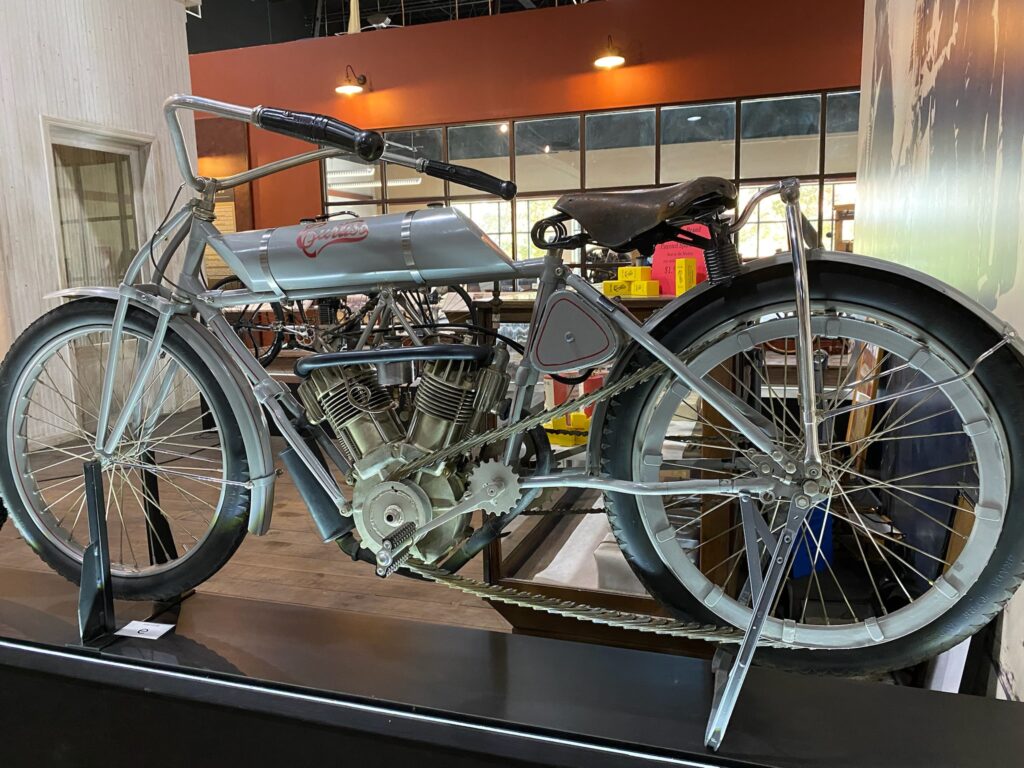
1909 3-cylinder 10hp 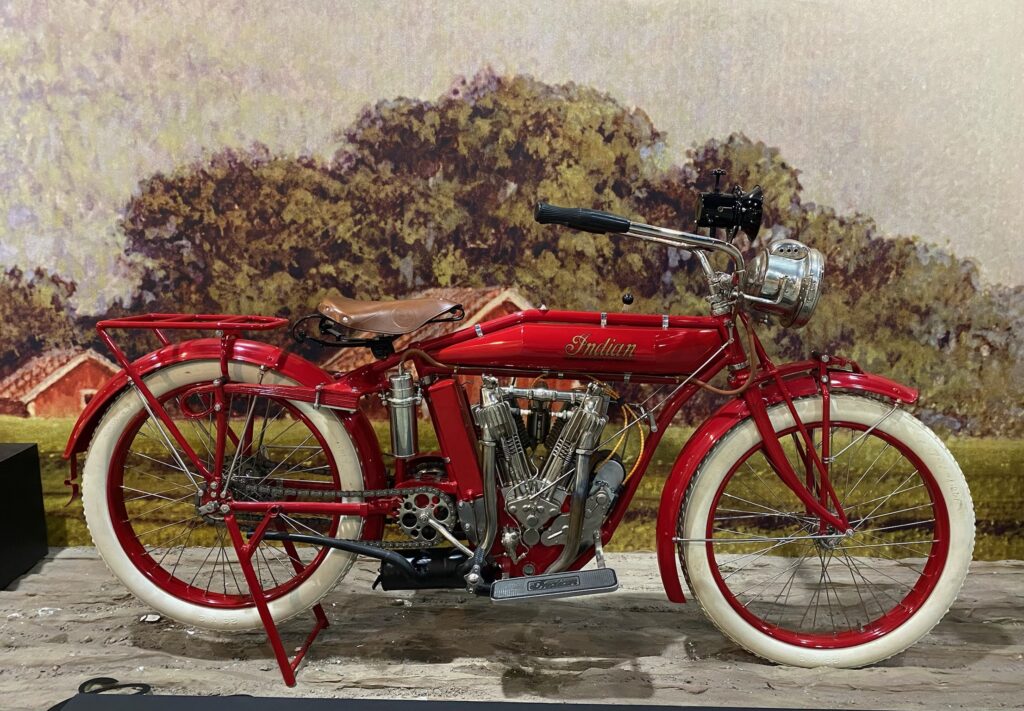
1914 2-cylinder 7hp 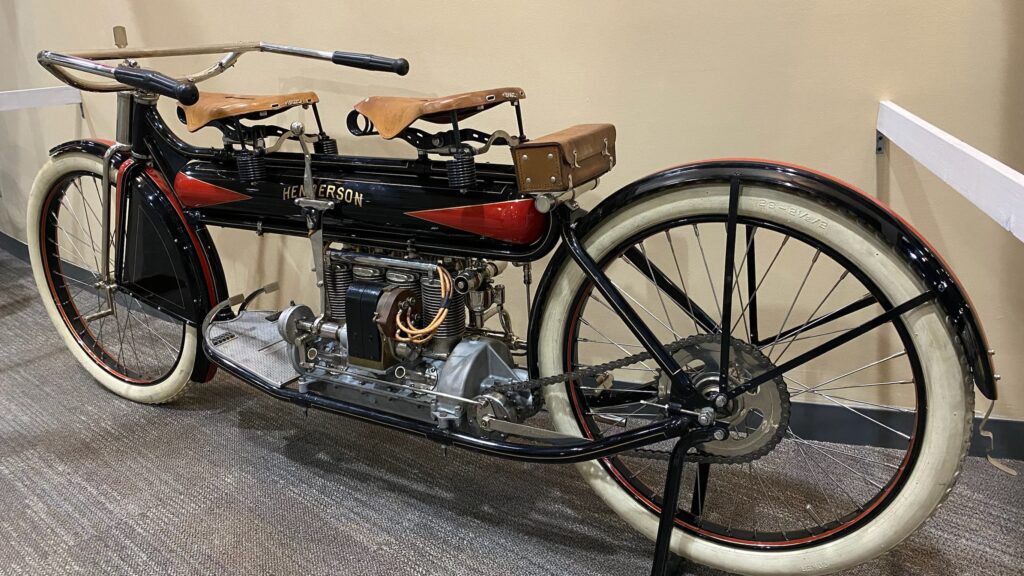
An Aviation Collaboration that Would Change His Life
That same year, Curtiss met Alexander Graham Bell, who was keenly interested in Curtiss’ innovations in lightweight engines to support his “Aerial Experiment Association” (AEA) – which focused on flying machines. Curtiss also began to get the flying bug that year as he’d experienced his first flight – in a solo flight of one of Captain Baldwin’s powered blimps.
The Wright Brothers had already flown at Kitty Hawk 4 years earlier in 1903, but instead of showing the world their flying machine they were keeping it a secret, afraid that someone would steal their ideas.
Meanwhile, the AEA recruited Curtiss to become a member, moved their operations to Hammondsport, and began to make rapid progress on powered flight. The first was the “Red Wing” (design #1, designed by AEA engineer Lt. Thomas Selfridge) which publicly flew in March of 1908 but crashed after 20 seconds in the air. Design #2 introduced ailerons (a big improvement on the Wright’s wing-warping method) to assist with control. This “White Wing” was designed by AEA member Casey Baldwin, and it flew 4 times in May of 1908 before crashing. Design #3, called the June Bug, was Curtiss’ design and also utilized ailerons for control. On July 4th, 1908, Curtiss flew the June Bug 5,090 feet with over 1,000 people watching. This flight was the first publicly observed powered flight in America. It was recorded and shown in movie theaters around the world. Their 4th design (by J.A.D. McCurdy) flew in December of 1908 and then was shipped to Nova Scotia, becoming the first heavier-than-air machine to fly in Canadian history. In just one year, the AEA with their quick turn on designs had accomplished what they’d set out to do!
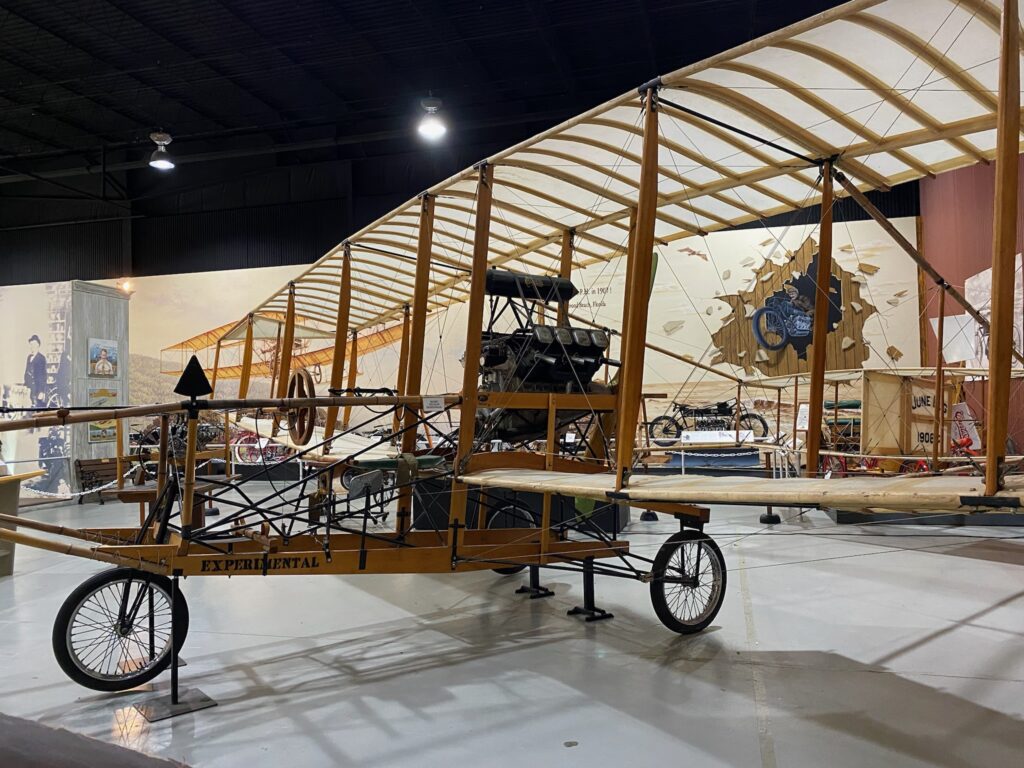
June Bug 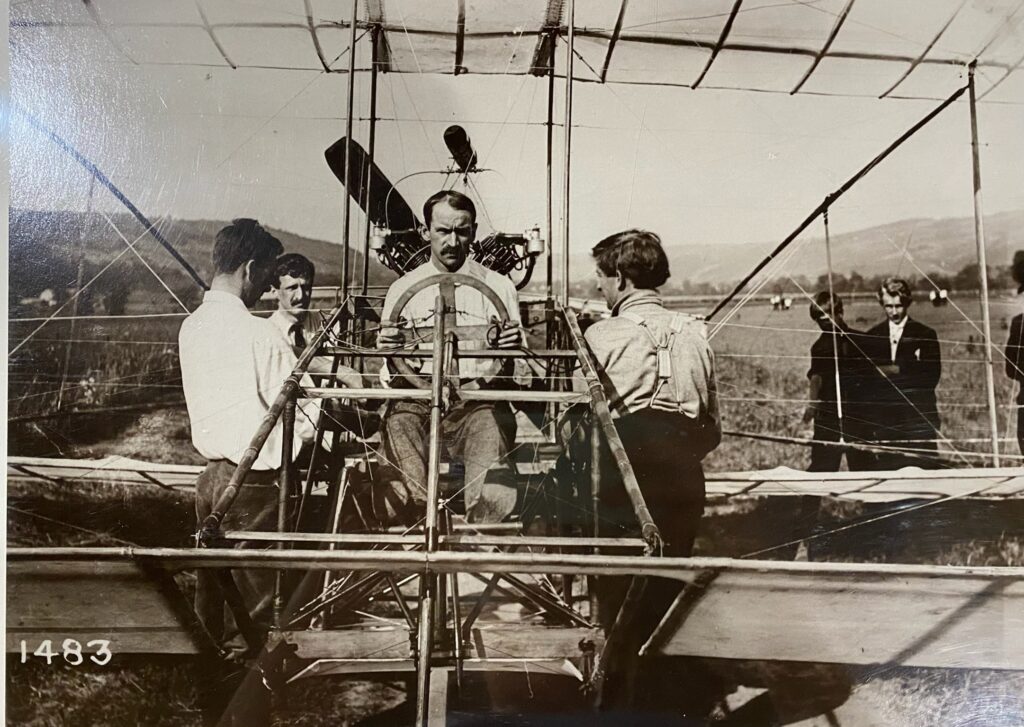
Record June Bug Flight
The only people not happy about these advancements in powered flight were the Wright Brothers – who quickly sued Curtiss, claiming that his design infringed on key claims of their powered flight patent – most notably the methods for control. Curtiss claimed that ailerons were clearly distinct and different from the wing warping mechanisms described in the Wright patent. Legal battles between them continued until WWI when the government stepped in to stop their fighting in order to support the war effort with improved aircraft.
By the winter of 1911, Curtiss had developed the A-1 Triad, a seaplane that the military could use. Curtiss proceeded to open flying schools and became known as the “Father of Naval Aviation.” Later he designed the “Jenny”, a military training plane for pilots in WWI. It’s estimated that 95% of American and Canadian military pilots learned to fly in a “Jenny”. Many of the “Jenny’s” were used by “barnstormers” after the war.
In 1928, when Curtiss and the remaining Wright brother (Orville) were no longer involved in their companies, their respective companies were merged to form the Curtiss-Wright Company which still exists today.
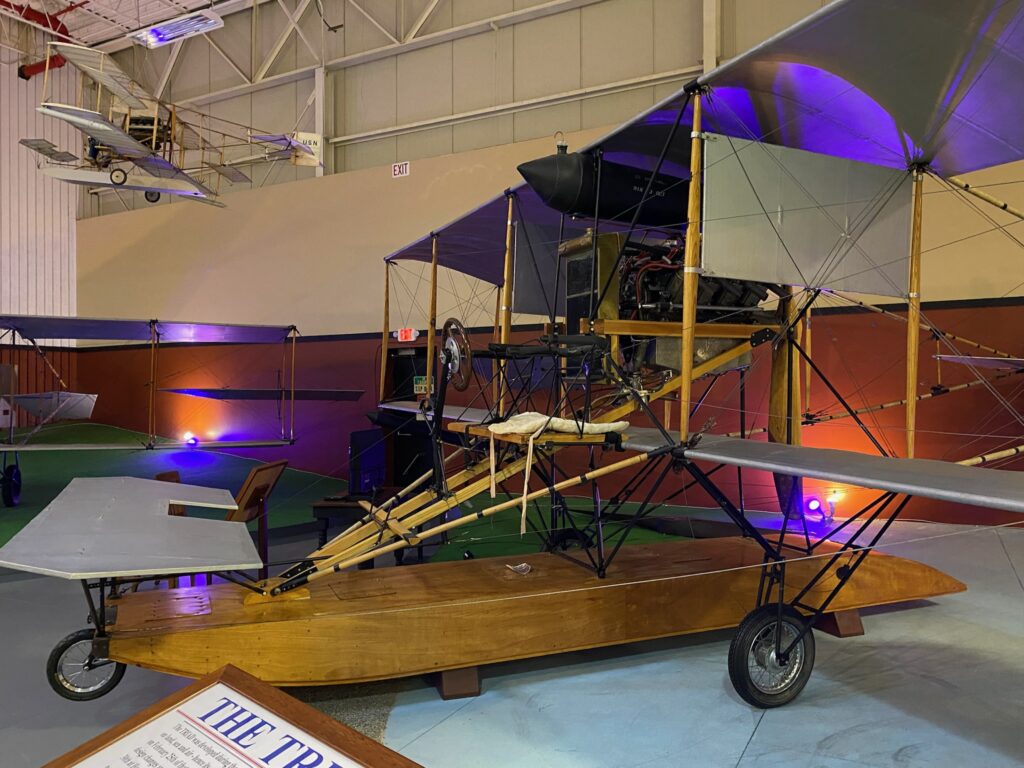
Triad 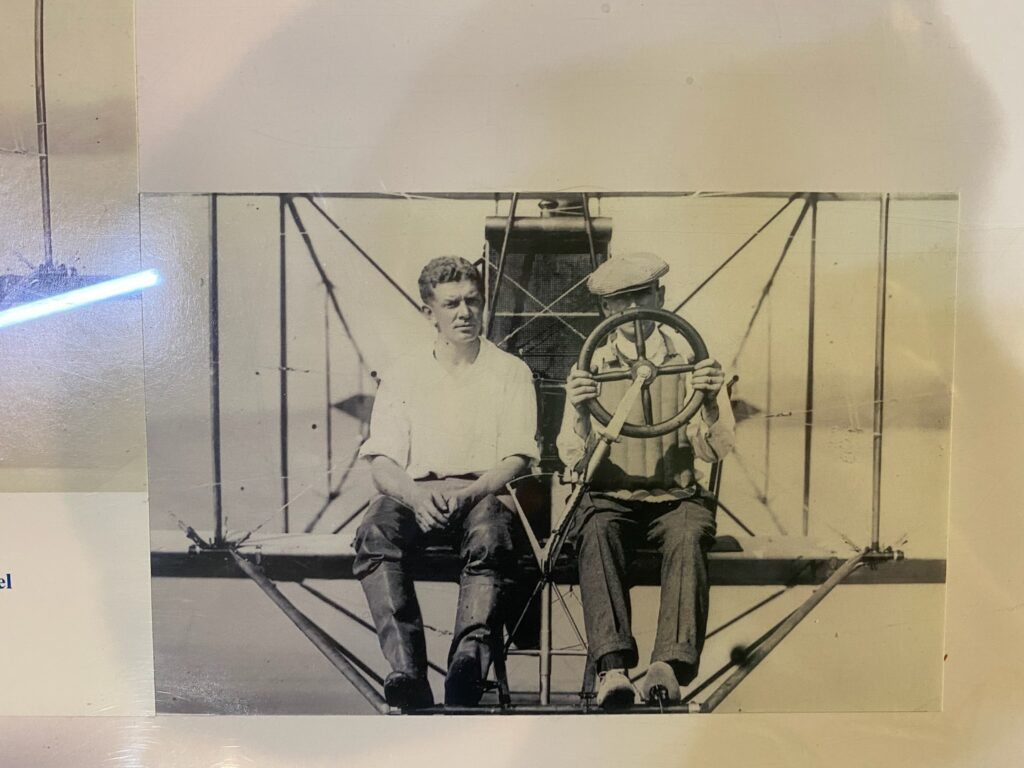
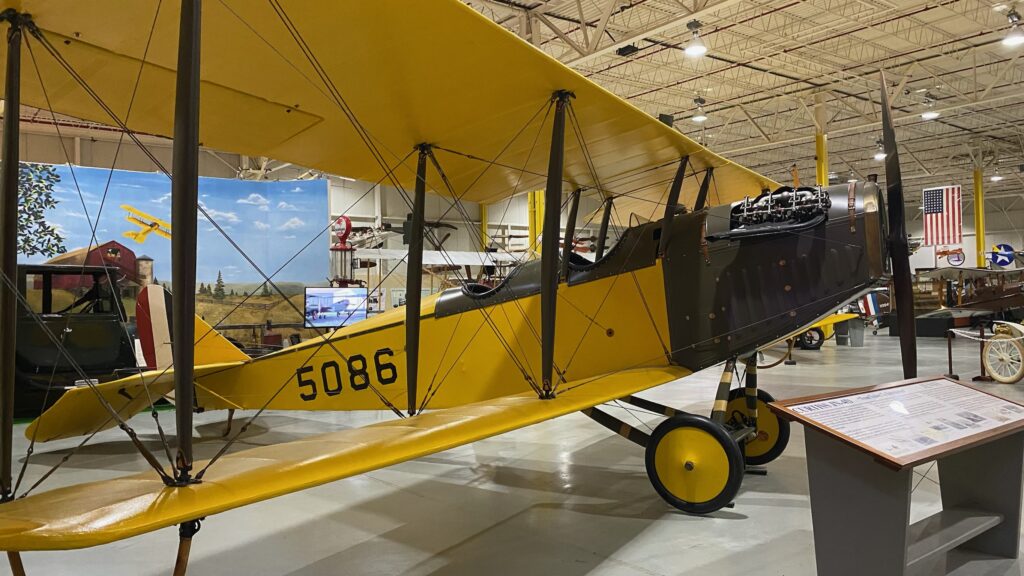
Jenny
Curtiss and the RV
Curtiss, now one of the wealthiest men in America, had moved to Florida where he invested in land and also developed the “Aerocar”, the first RV 5th wheel with electric power, propane heating, propane cooking, a bathroom and a shower (not much different than today’s RVs), to travel to Hammondsport.
Glenn Curtiss died of complications from an appendicitis at the young age of 52.
The Glenn Curtiss Museum in Hammondsport NY provides all of this history and displays his bikes, motorcycles, airplanes, and RV. The museum is very well done and a wonderful tribute to a life well-lived!

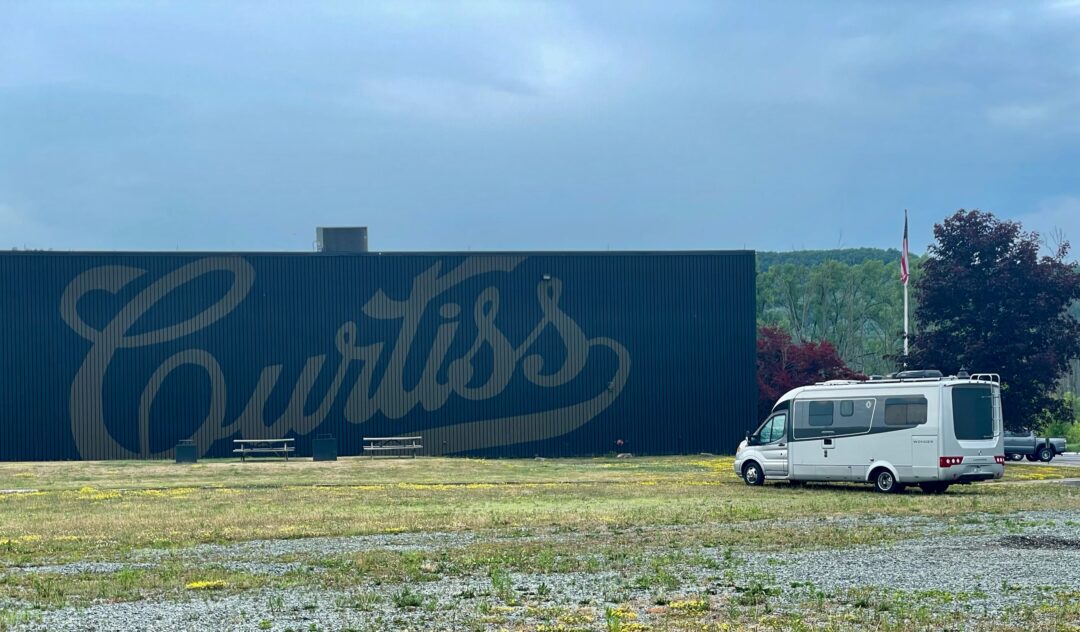
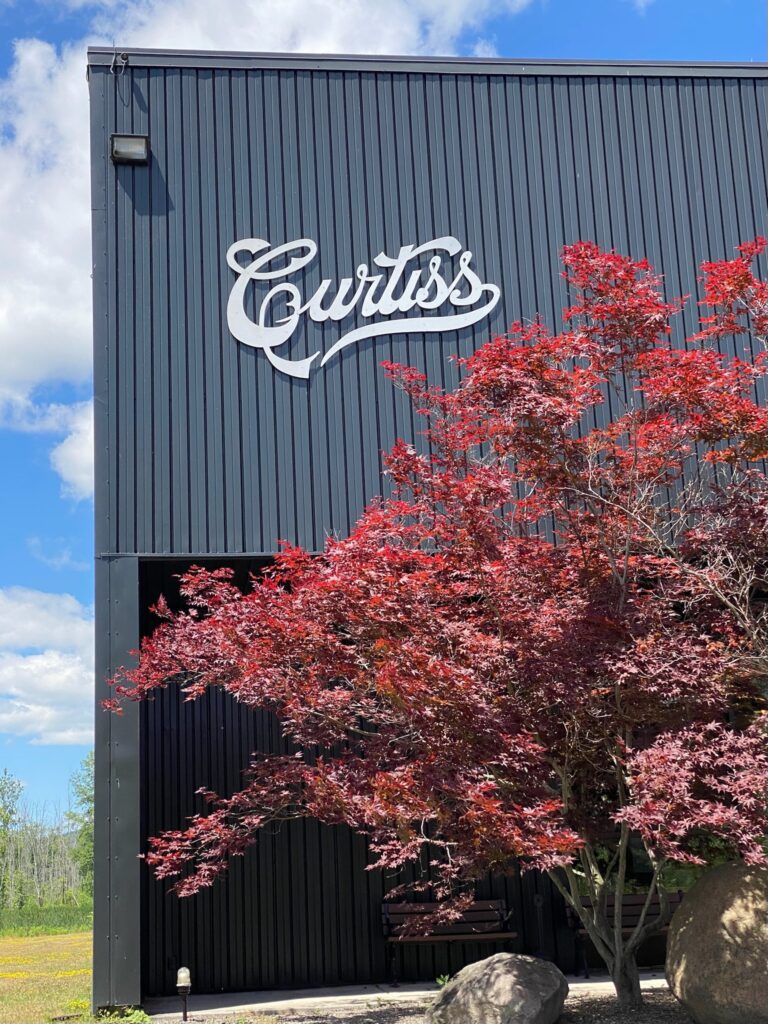
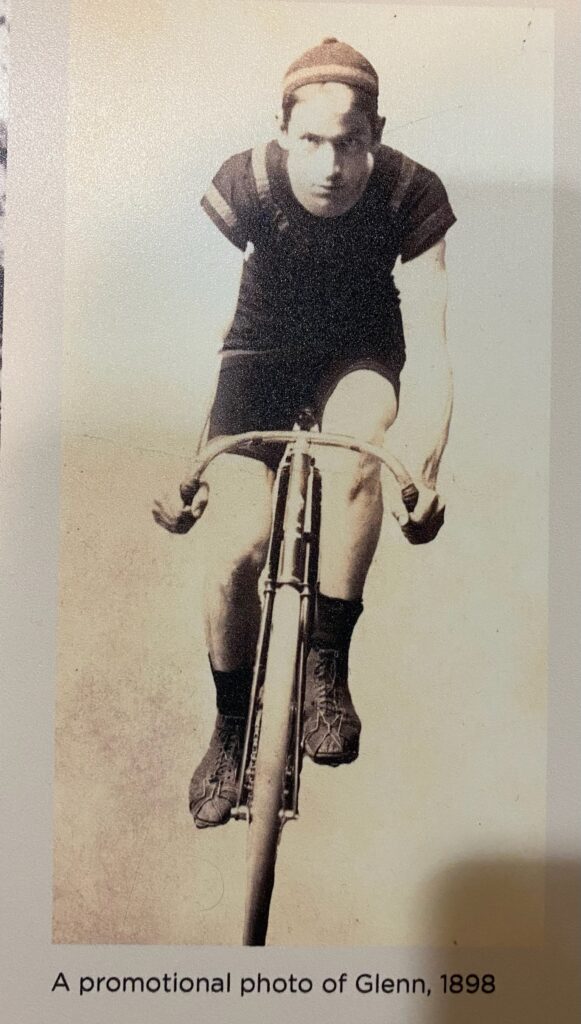
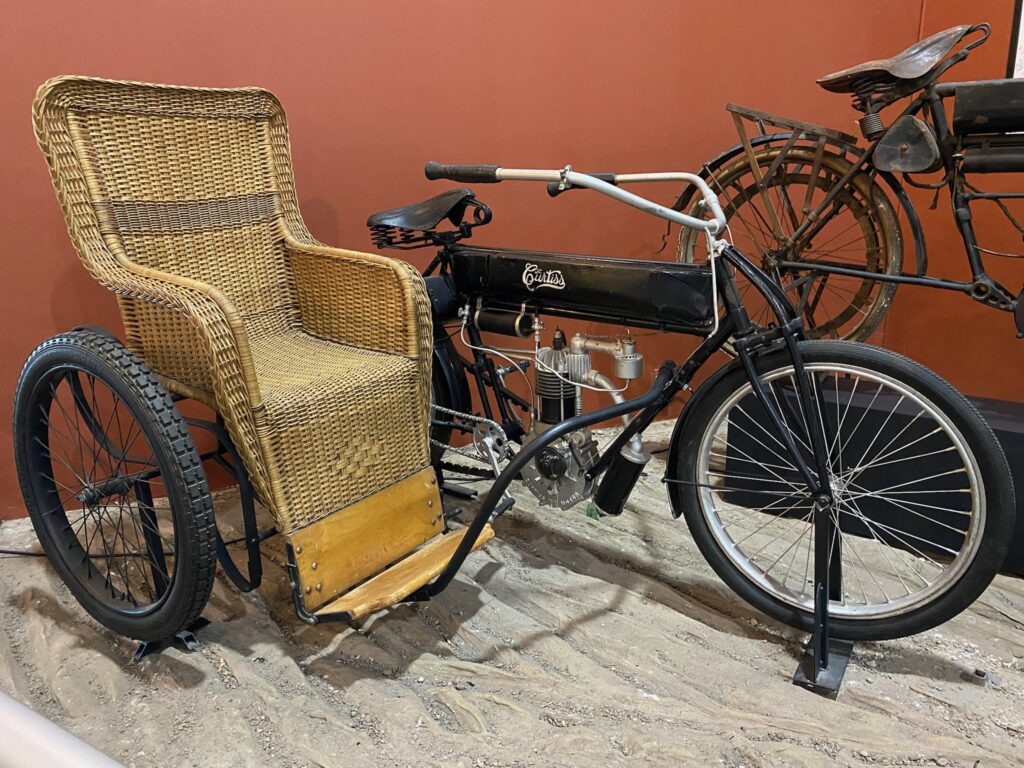
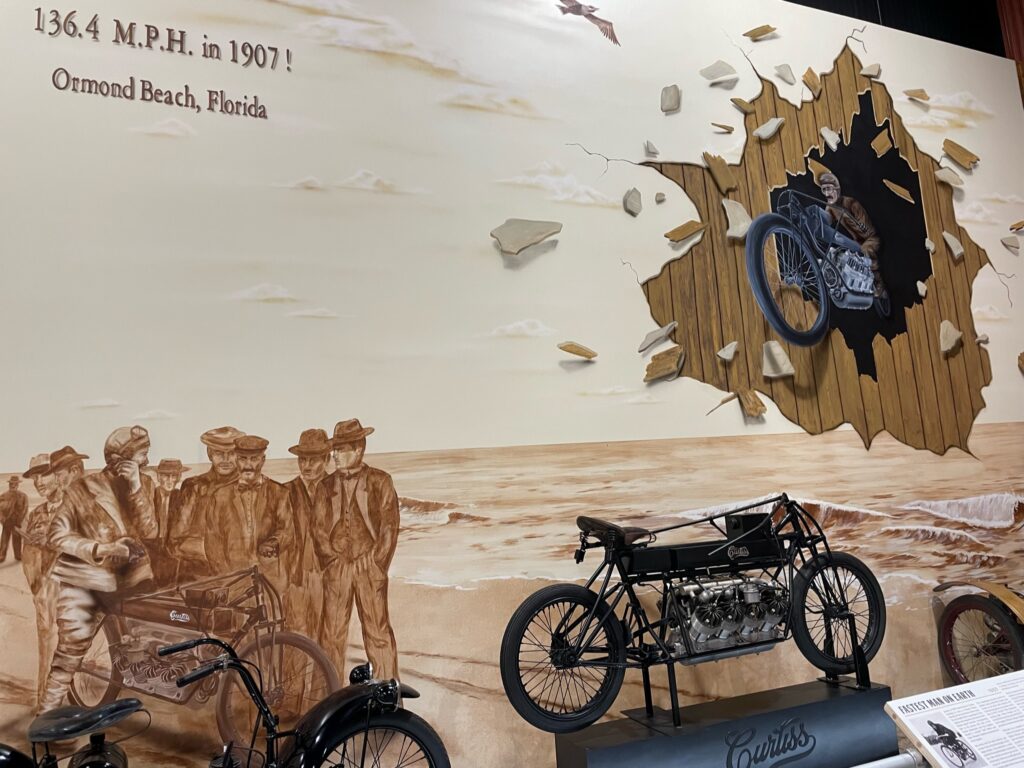
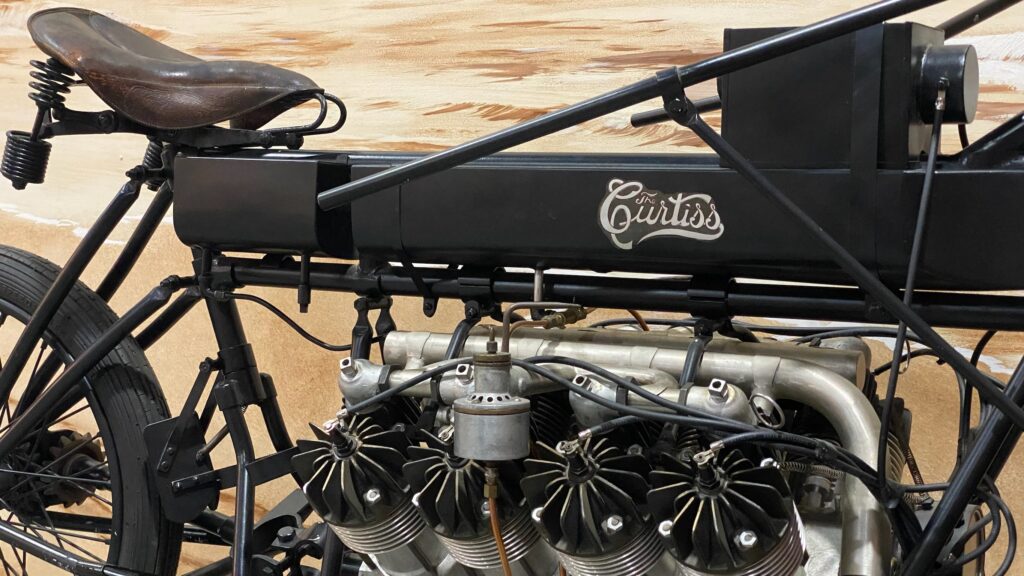
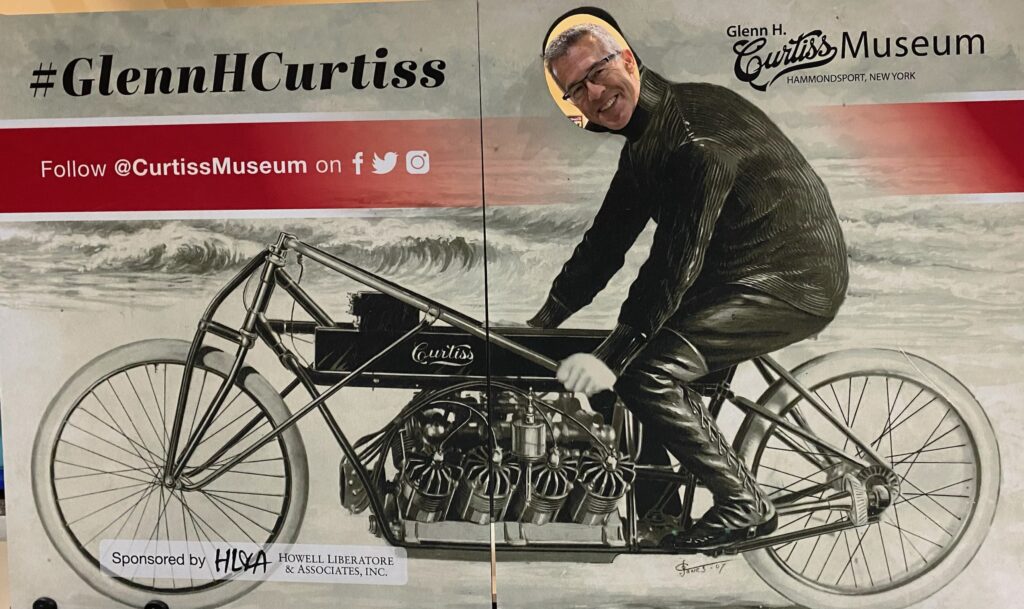
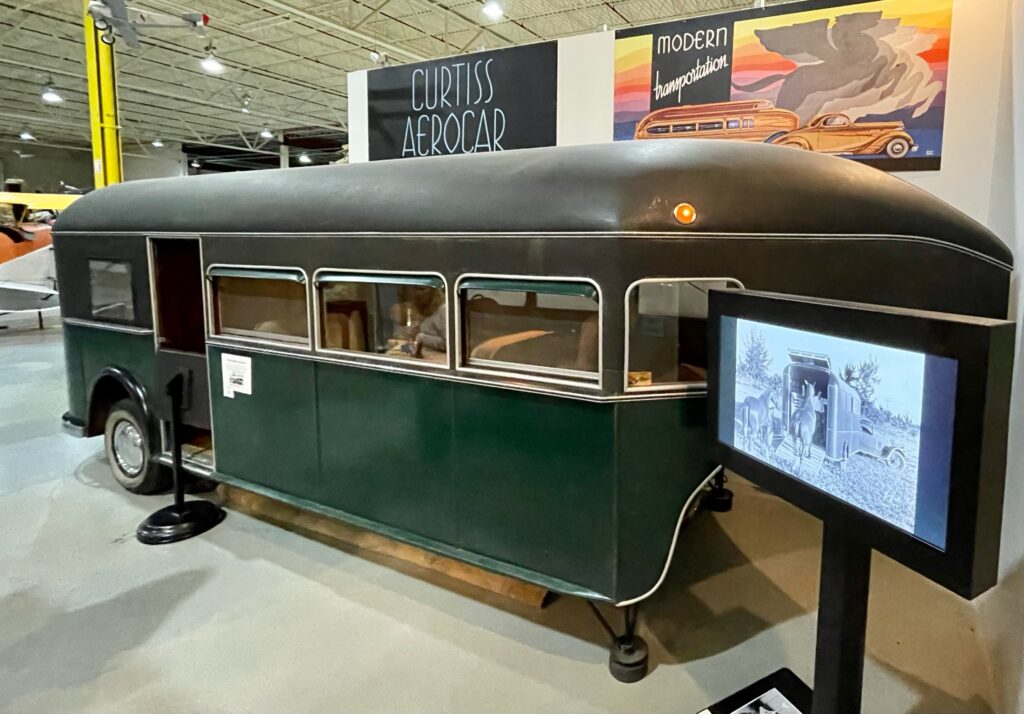
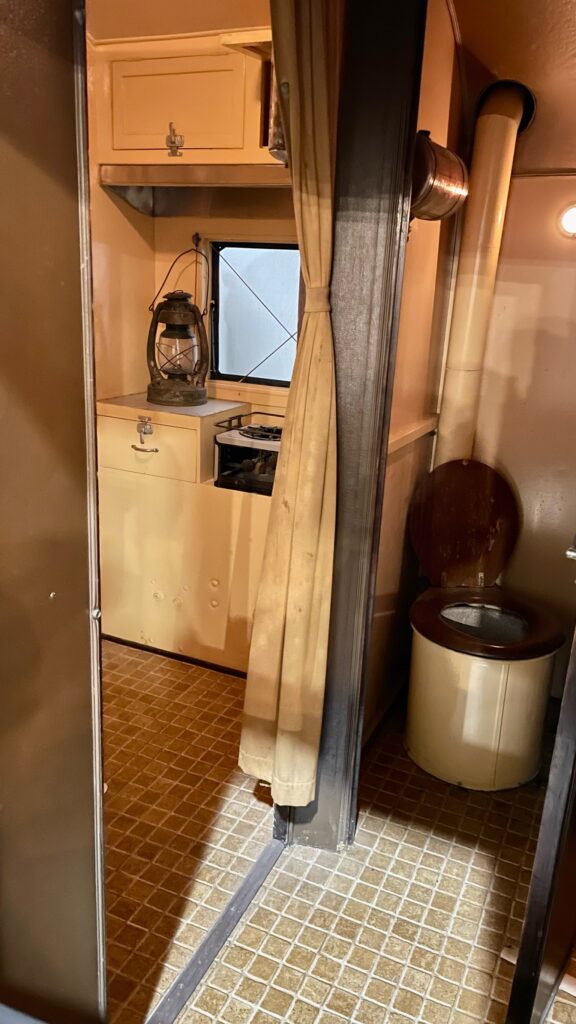

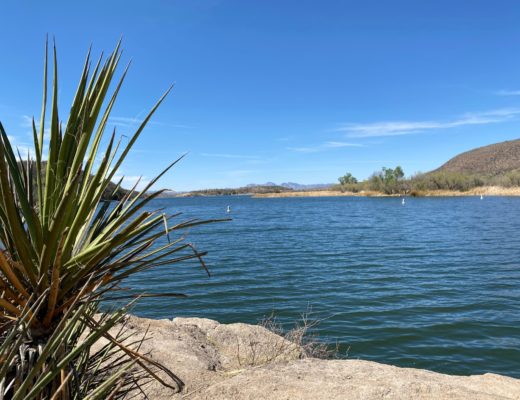
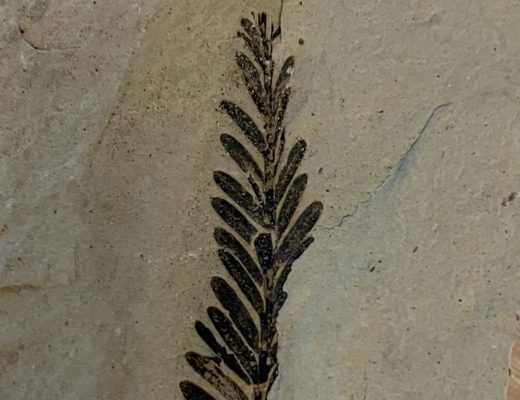








 Did you know that the oldest and largest aviati
Did you know that the oldest and largest aviati








 #camphairdontcar
#camphairdontcar


